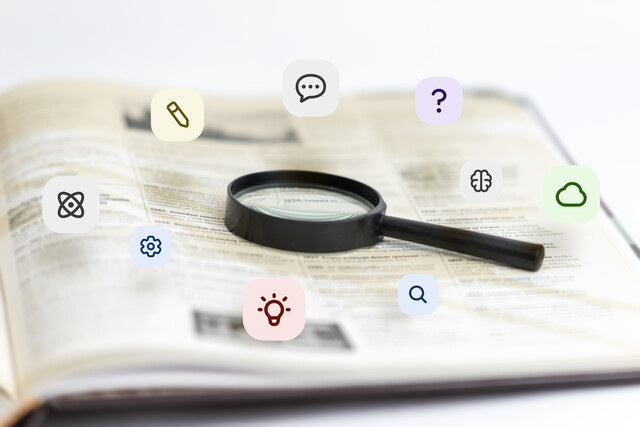Proofreading is defined as reading a proof copy of a text so that errors can be found and corrected. Proofreading can be done at a variety of stages and to a variety of degrees. Proofreading can be used on something as simple as a term paper, or on something as important as a new novel from a best-selling author.
No one writes perfectly every single time. No one can write without errors. Everyone makes errors, from Shakespeare to King, from Dickens to Hemingway. Proofreading allows an individual to see the errors they have made and correct them.
A Proof Copy
One thing you will hear a lot of when you are proofreading is the proof copy. A proof copy is essentially a version of the manuscript that has been typeset after copyediting has been done. What is copyediting? We'll get to that shortly.
Proof copies typically contain many typos. Typo is short for typographic errors and they can come in different forms.
Proofreading is usually seen as a specific writing skill and when you are a writer (or if you are pursuing a career in writing and editing) it is an invaluable skill and you can do very well for yourself. One of the biggest misconceptions related to proofreading is that you need no training to do it. The truth is that people not trained in proofreading may not see improper usage of words or even spot missing words. In addition, individuals lacking proofreading training may not be able to recognize correct grammar usage.
How Proofreading Differs From Copyediting
More often than not, proofreading and copyediting are seen as the same thing. However, while they are similar, they do differ in important aspects. Proofreading is actually a separate activity from copyediting. While proofreading consists of reviewing text on paper and on the computer, as well as checking for typos and formatting errors, copyediting is focused on other things like grammar, flow and consistency. Yes, a copyeditor still checks for basic formatting and punctuation problems, but that won't be their primary concern.
In our computerized age, there are also automated proofreading solutions that can be used by writers to have their work checked automatically without having to go through each line by themselves. They can also employ other editors to go through and edit their work, which can be expensive depending on the size of the work.
In certain areas of writing, a proofreader is usually not someone who is studying in the same academic subject as the writer. This is because the proofreader is not someone who is providing advice on the content of the writing, but providing help to make the writing error-free and easier to read.
Often the first proofreader is the actual writer. Since proofing is a very time-consuming process, the writer must take their personal time to proofread. If they do not have the time, they will hire a proofreader to go through and edit the work.
How Much Will It Cost?
As for how much proofreading is going to cost, it depends greatly on the level of expertise of the individual who is editing the work. Typically, the price breaks down as follows:
- Low-end pay rate: $15 per hour or $2 per page
- Average pay rate: $30 per hour or $3 per page
- High-end pay rate: $75 per hour or $5 per page
- Low-end pay rate: $30 per hour or $3 per page
- Average pay rate: $60 per hour or $3.50 per page
- High-end pay rate: $110 per hour or $4 per page
- Low-end pay rate: $30 per hour
- Average pay rate: $60 per hour
- High-end pay rate: $100 per hour
Copyediting will typically be done before proofreading is done because proofreading is what is done before publication of the written work.
The Five Cs of Copyediting
- Clear
- Correct
- Concise
- Comprehensive
- Consistent
One way of looking at this is that the five Cs make sure that the written work says what it means and means exactly what it says.
Copyediting will cover a variety of editing areas, including spelling, grammar (although proofreading is done more often in this regard), punctuation, terminology, timelines, semantics, style and more. The copyeditor also makes sure that there will be no legal problems related to the written work, especially when the copyeditor works in the newspaper and magazine industries. This is why copyeditors are seen as the last line of defense for a newspaper.
The Changing World of Copyediting
The world of copyediting has actually changed quite a bit since the early days of the industry. In the past, a copyeditor would read a manuscript and mark it with correction marks. However, with the computer taking over much of the industry, the copyeditor will enter corrections directly, which means that the person having their work edited does not have to make the changes.
Copyeditors are also now doing more design and layout work thanks to the easy-to-use and readily available desktop publishing software. This means that a copyeditor needs to have a greater skill set than what original copyeditors once had.
What Copyeditors Need
When you choose to be a copyeditor there are several skills that you should have beyond how to use a computer and do designs. A good copyeditor will not only have an excellent command of the English language, but they will also have good critical thinking skills so that they can see problems easily in text. Copyeditors also need to have an attention to detail, a sense of style, a knowledge of factual errors and a desire to achieve perfection with their work.
A copyeditor does not need to have a college degree, but many do have a degree in journalism, English, or communications. Having a degree can help with some jobs but it is by no means required to be a copyeditor. To apply for a job as a copyeditor, job candidates will most likely need to take an editing test. If they pass the editing test, the applicant can move on to the next step in the interview process.
Neither the United States or the United Kingdom have an official copyediting organization issuing a recognized certification or qualification.
Where Copyeditors Work
Copyeditors can work in a variety of fields because of the large skill set that copyeditors must have. Copyeditors can work in universities and schools where they work on various literary journals and publications. The copyeditor can also work for a post-secondary journal or for independent academic clients.
In the world of publishing, the copyeditor can have a great number of different clients to work for, including newspapers, journals, book publishers, online publishers, writers and websites.
In the world of business, a copyeditor can work in the office of companies, for non-profit organizations, or as an independent contractor in industries like technology, medicine, the arts and engineering.
Dealing With Errors
As a copyeditor and proofreader, you will be dealing with many different errors. The following is a refresher of the most common types of errors editors encounter.
- It is and it's – This is commonly seen as an error. It's is a contraction for It is.
It's a good decision to invest in this company. – This is correct
It's goal is to be the best show on television – This is not correct. If you say it without shortening it, it would read as "It is goal is to be the best show on television." As you can see, it does not read correctly.
- Web site and Website – When you are copyediting a website, this is a common error to see and something you should look for. Both are technically correct but website is for informal writing while web site is for more formal writing.
- Periods and Commas in quotations – Another common mistake often seen is periods and commas going outside the quotation marks.
"She said she was going to the store," the detective said. - This is correct.
"She said she was going to the store". – This is not correct.
- E-mail versus email – This is a common error seen, especially on websites. E-mail should always be written with the hyphen.
"I think I will send him an e-mail." – This is correct
"I think I will send him an email." – This is not correct
- Hyphens – Many writers do not quite understand how hyphens work. Typically, a hyphen is used when a compound adjective appears before a noun. It is not used if the compound adjective appears after the noun.
"The magazine has very up-to-date material in it." – This is correct.
"The material in the magazine is up to date." – There is no hyphen here because the compound adjective comes after the noun.
- Commas are commonly put in the wrong spot by writers. Commas are used in specific instances.
- Commas are used to separate items in a list as in "She went to get beef, apples, and bananas from the store.
- Commas are used in introductory phrases and words as in "Therefore, you should make sure you always brush your teeth."
- Commas are used to separate compound sentences as in "Biology is not an easy science to know, and it requires a lot of studying to be successful."
- Your and You're – This is probably one of the most common errors writers make. It is important to remember that "your" is possessive, while "you're" is the contraction of "you are".
"You're my friend, and your car is really great." – This is correct.
"Your my friend, and you're car is really great." – This is incorrect.
- Their, there and they're – This is another very common error found by copyeditors. Each of these means something different, but each word is mixed-up on a regular basis.
Their – This is possessive and means that it belongs to someone.
There – This is to refer to 'somewhere' and is a pronoun.
They're – This is a contraction for 'they are'.
Common Word Problems
Below are several words that are commonly misspelled by writers in their work.
- Grammar – Commonly misspelled as grammer
- Apparent – Commonly misspelled as apparant
- Publicly – Commonly misspelled as publically
- Definitely – Commonly misspelled as definately
- Harass – Commonly misspelled as harrass
Below are several words that are not actually words
- Alot – This should actually be written as a lot
- Layed – If you want to say the past-tense form of lay, then you would write laid.
- Snuck – The actual past-tense of sneak is sneaked.




















